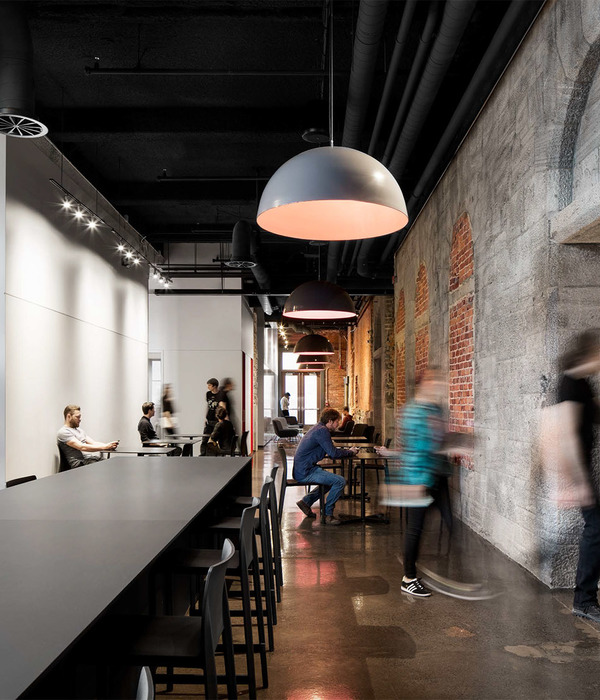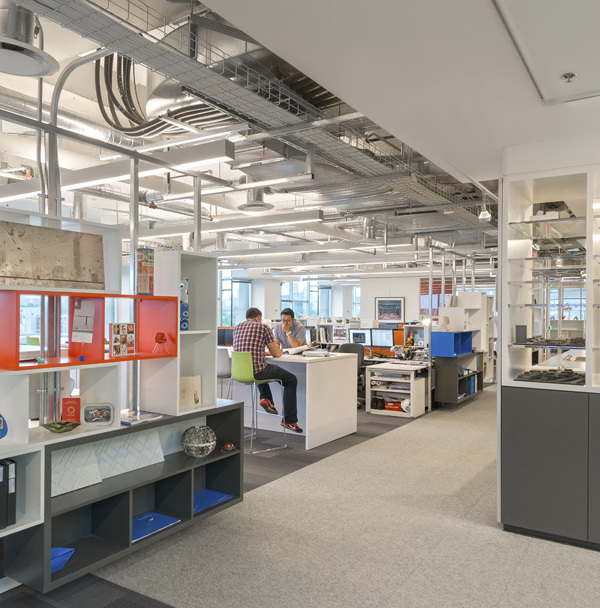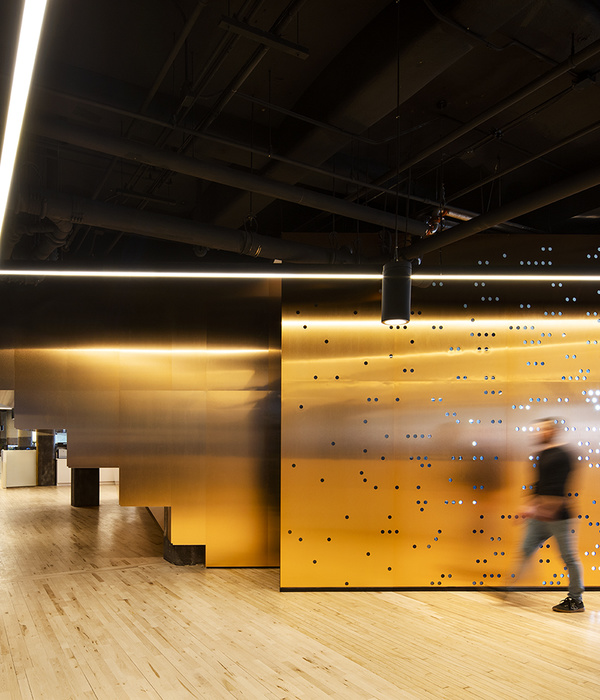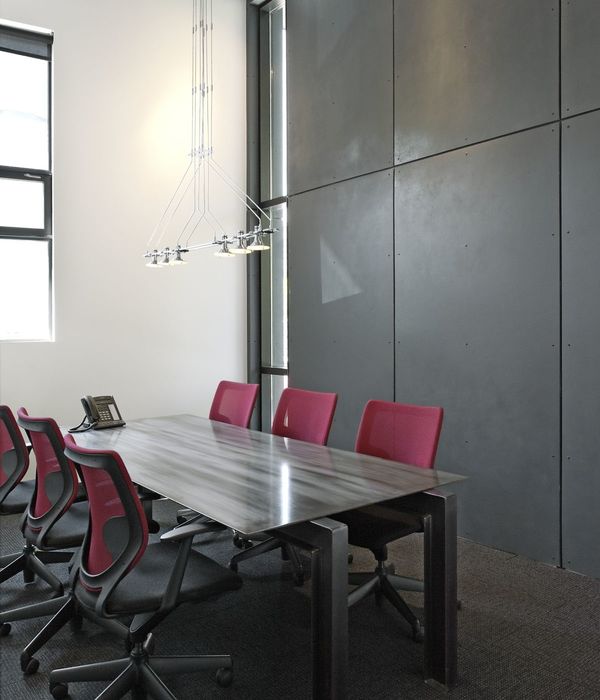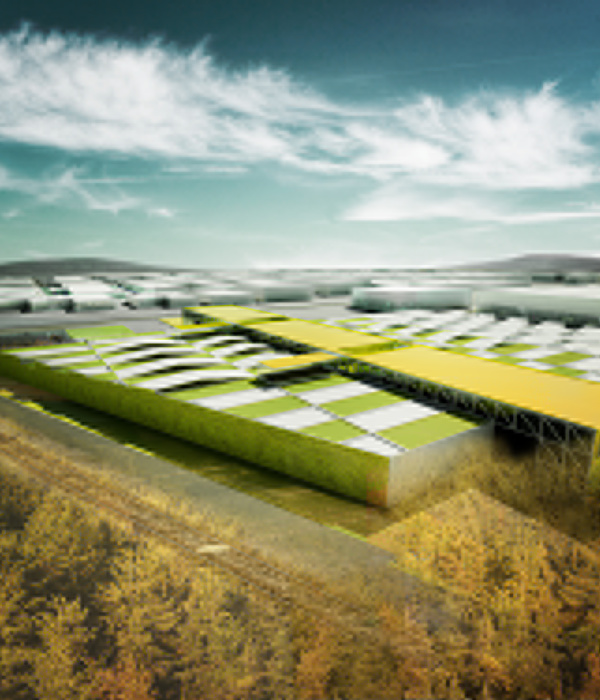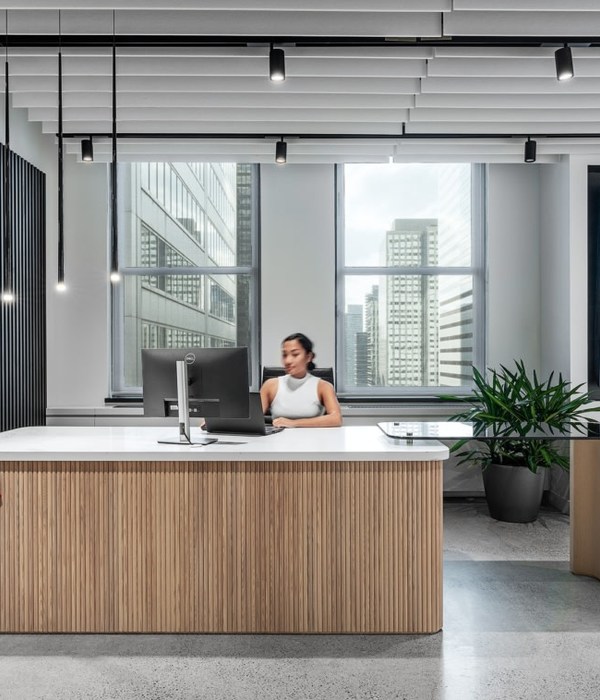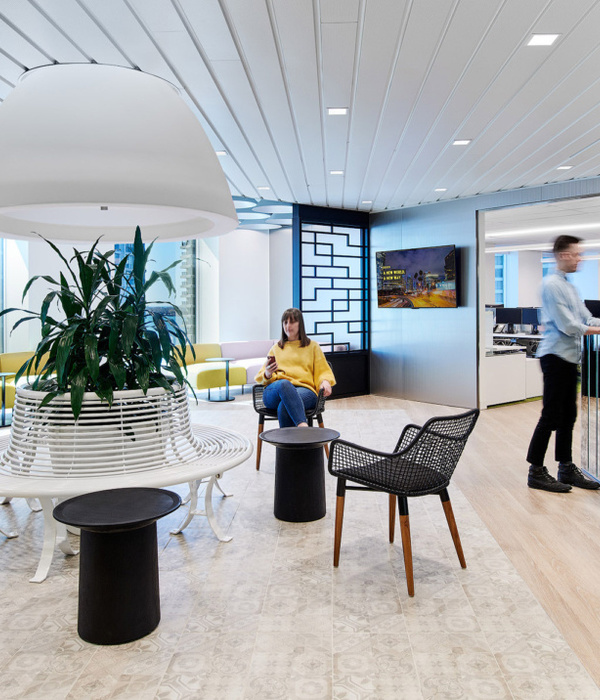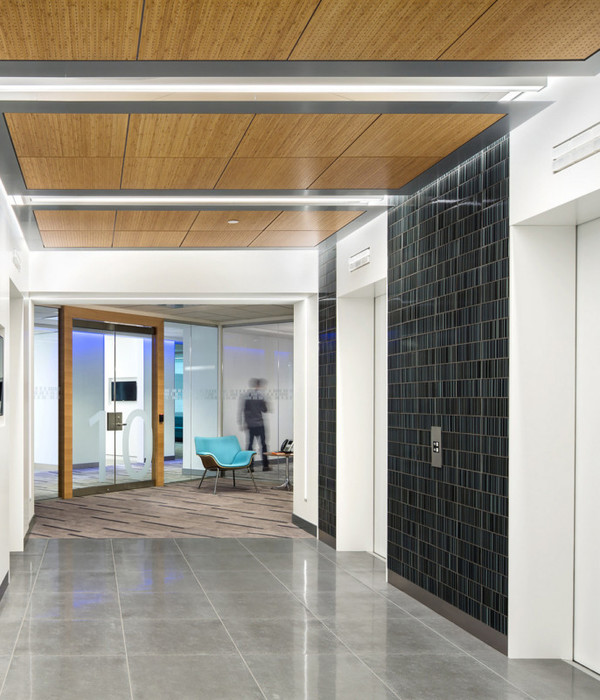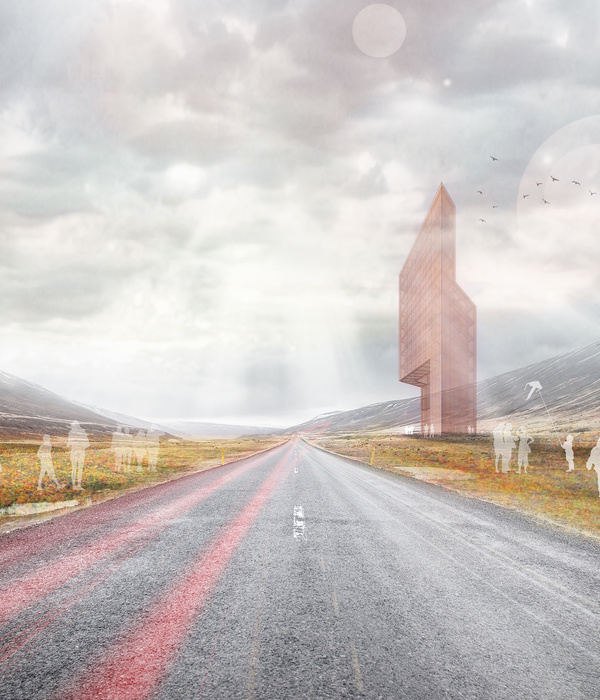中国信达合肥灾备中心 | 庭院和谐共生的绿色数据中心
- 设计团队:王振军,蒋小华,袁源,李达,冯伟,陈珑,尹钰,孙成伟
- 项目地点:中国 合肥
- 项目时间:2012设计,2015.12建成
- 项目面积:13.98万平方米
- 图片版权:王振军工作室
- 所属单位:中国电子工程设计院
该项目为中国信达公司“二地三中心”灾备模式下的合肥中心建设项目,位于合肥城市发展轴线上的滨湖新区,徽州大道与杭州路交口,距离巢湖3公里。其主要功能包含数据中心及动力中心、总控中心(ECC)、运维呼叫中心、配套的研发中心及后勤服务培训中心。项目建设用地5.56公顷,总建筑面积13.98万平方米(其中地上10.36万平方米)。
It is the construction project of China Cinda Asset Management Corporation for its Hefei Center under the disaster recovery mode of “three centers built in two locations”; it is located in the Binhu New District on the urban development axis of Hefei, at the intersection of Huizhou Avenue and Hangzhou Road, 3 km from Chaohu Lake. Its major functions include data center, power center, Enterprise Command Center(ECC), the company’s call center, as well as the supporting R&D center, and life service and training center. The project covers 5.56 hectares of construction land, and the gross floor area is 139,800sqm (ca. 103,600sqm over ground).
▼项目整体鸟瞰,full view

▼从徽州大道鸟瞰园区,aerial view from Huizhou Road
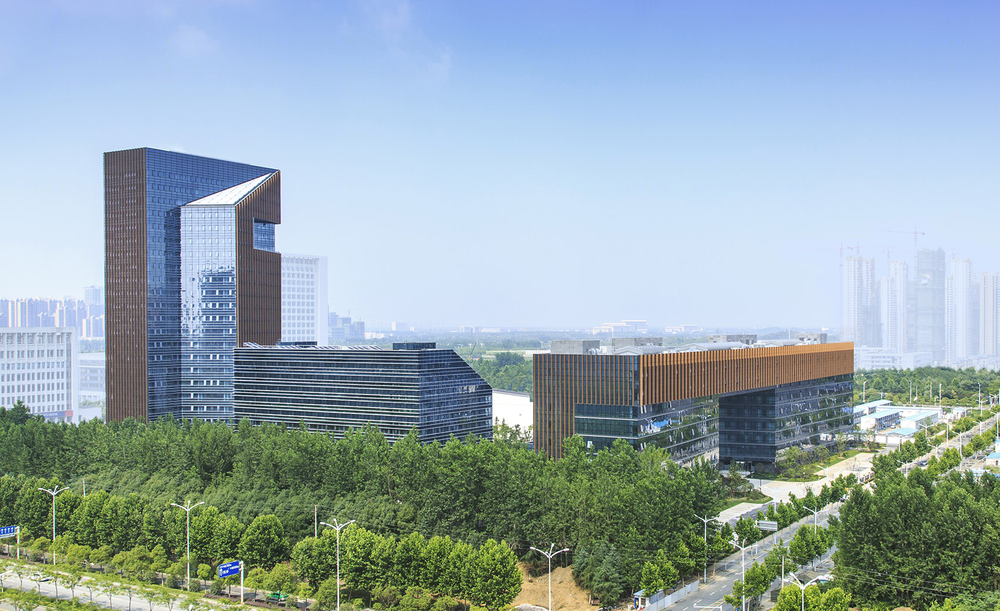
对于数据灾备这一典型的IT建筑设计而言,我们面对的最根本任务依然是“如何处理建筑与自然、人与自然的关系”这一本源问题。设计基于生态的有机建构理念,遵循“四水归堂”、返璞归真、道法自然、藏风聚气的传统哲学思想,最大限度地整合利用基地外部环境资源的同时注重打造内部景观环境,使自然、人与建筑之间形成极度和谐、交融共生并可持续发展的生态秩序。
For the design of buildings for data disaster recovery, the most challenging task for us is “how to handle the relationship between building and nature, and the one between man and nature” – the ultimate issue for architects.
Based on the concept of ecologically organic construction, and complying with the traditional philosophical principles of “the rainwater of a courtyard flowing from the roofs into the yard”, getting back to basics, after nature, as well as hiding wind and gathering gas, the design attempts to focus on constructing the internal landscape environment while maximizing the integration and utilization of the external environmental resources, so as to create an ecological order that is characterized by the extreme harmony among nature, man and building for blending and symbiosis to facilitate sustainable development.
▼方案草图,scheme and sketch
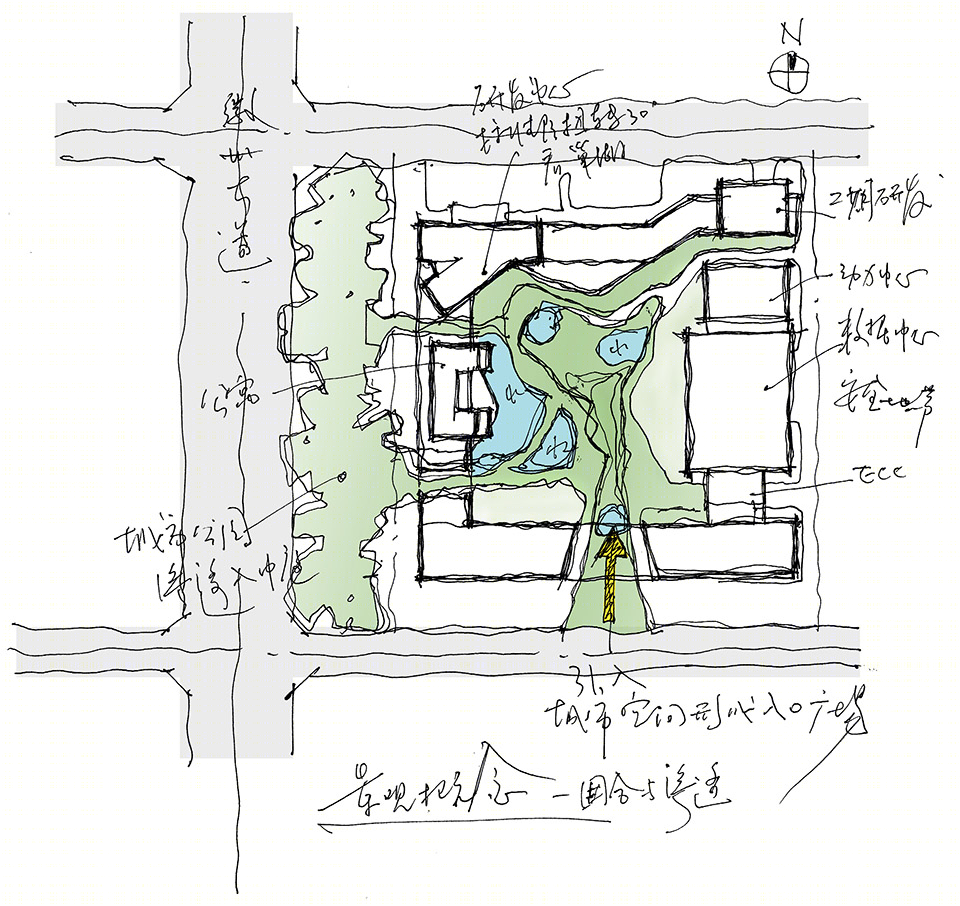
该基地的数据、后援、研发和后勤中心以两个L型体块相扣有机地围合,构成幽静怡人的“景观合院空间”形式,成为整个建筑群的物理空间中心。其中数据机房基于其高安全性运维需求,置于受干扰最小的用地东侧;员工较集中的研发中心及后勤服务及培训中心则布置于用地的西北角和西侧,处在西侧城市小型街边公园与中庭的围合中。
The building for data, backup, and R&D and the logistics center in the base enclose a secluded and attractive landscape courtyard space by connecting two L-shaped blocks. The data server room, due to its high security requirement for operation and service, is placed on the east side of the site, which is the least disturbed zone; the R&D center and the life service & training center, where staffers are concentrated, are placed at the northwest corner and west side of the site respectively, close to the small local park to the west side.
▼分析图,diagram
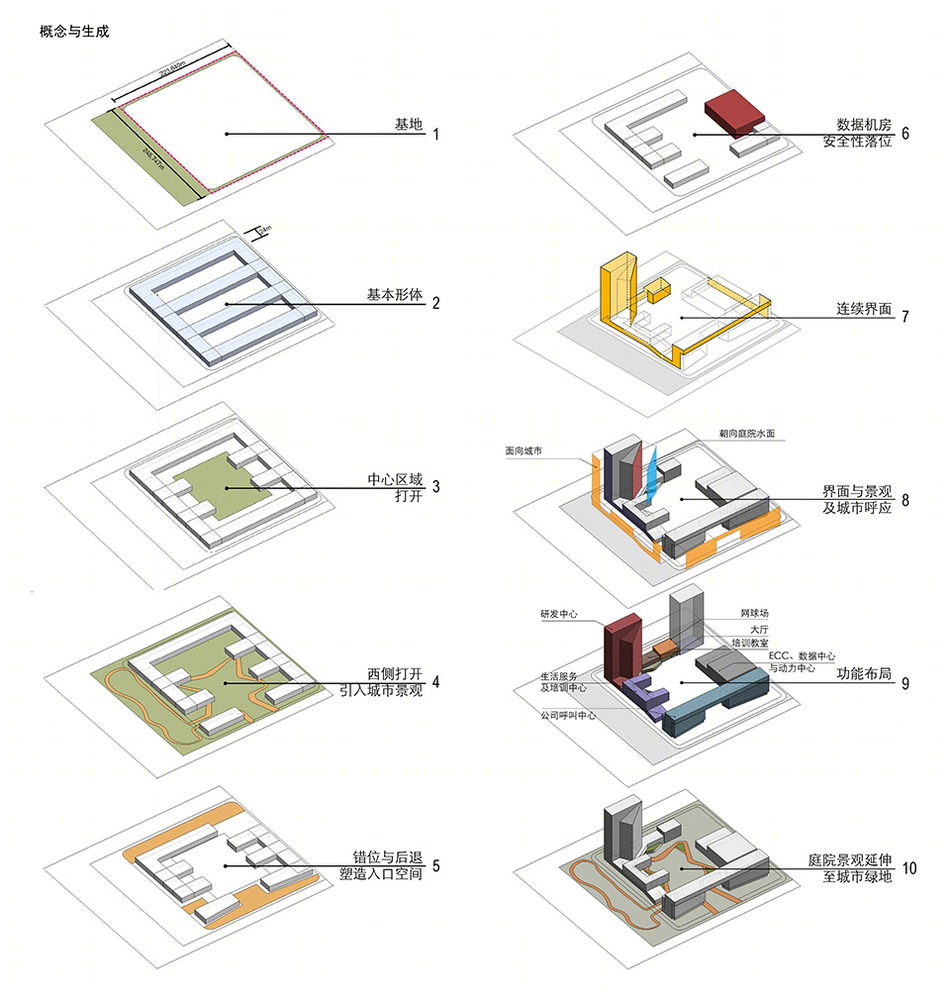
▼研发中心近景,the R&D building

▼从杭州路看园区,view from Hangzhou Road

中心庭院作为整个建筑机体系统中的“绿色心脏”,其主体设计运用生动的造园手法,营造富有层次的立体开敞景观,并集中布置疏密有致的树阵及水面。置身于内庭院中的人们可以体验到退台屋顶花园的层次感、架空连廊塑造的灰空间等多维度变化。
The central courtyard is the “green heart” of the overall building organism system, ingenious gardening approaches are introduced for the master design of the yard, to create a hierarchic, three-dimensional and open green-land landscape, incorporating well-proportioned tree arrays and water pools. Standing in the courtyard, one can easily feel the sense of depth in the set-back roof garden, as well as the multi-dimensional variation in the gray space created by the elevated corridor.
▼建筑与庭院,architecture with courtyard
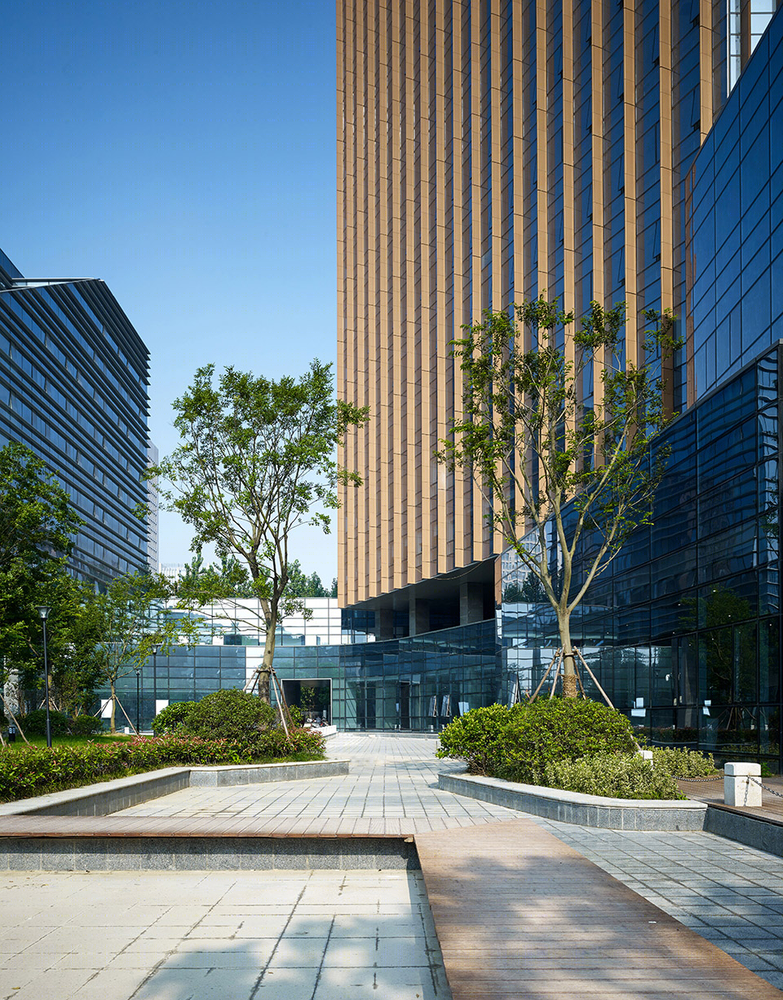
▼庭院景观空间,the courtyard

不仅如此,面向城市的一面继续采用连续界面手法将建筑组群有机地整合在一起,塑造了空间的整体氛围。这些具有音乐的韵律的形态,如建筑的开合、扭转、错落、架空等均充分考虑了城市文脉及周围的景观脉络,达到庭院景观与南部的城市空间、西侧的城市绿地空间之间的互通,形成自然环境的融合渗透和互动协调。
In addition, the continuous interface approach is applied for the design of the side facing the city to organically integrate the building clusters, shaping the holistic atmosphere of the space. These patterns, resembling the musical rhythm, such as the opening and closing, turning and twisting, interlacing, and elevating, etc. take full consideration of the urban context and ambient landscape vein, enabling the interflow between the courtyard landscape and the urban space in the south as well as the urban green-land space in the west, in a bid to facilitate the blending and fusing, and mutual coordinating of the natural environment.
▼运维呼叫中心近景,the company’s call center

▼底层架空空间,elevating space

基地的核心——数据中心建筑处理成具有地域特点的新徽派建筑风格,以体现建筑的地域性文化传承和人文关怀;基地制高点——研发大楼向主干道方向张开的同时与远处的巢湖风景区做出呼应, 站在研发大楼十七层的空中庭院眺望, 巢湖美景尽收眼底。
The building for data center – the core of the base, takes advantage of the style of New Huizhou-style Architecture with the local geographical characteristics, so as to express the regional cultural inheritance and humanistic care in architecture; the R&D building – the commanding height of the base, responds to the scenic zone of Chaohu Lake in the distance while opening towards the artery; gazing in the sky garden on the 17
th
floor of the R&D building, one will be attracted by the beautiful panoramic view of the city and beyond.
▼新徽派风格的数据中心,the now Huizhou-stle data center

▼数据中心与ECC近景,data center and ECC
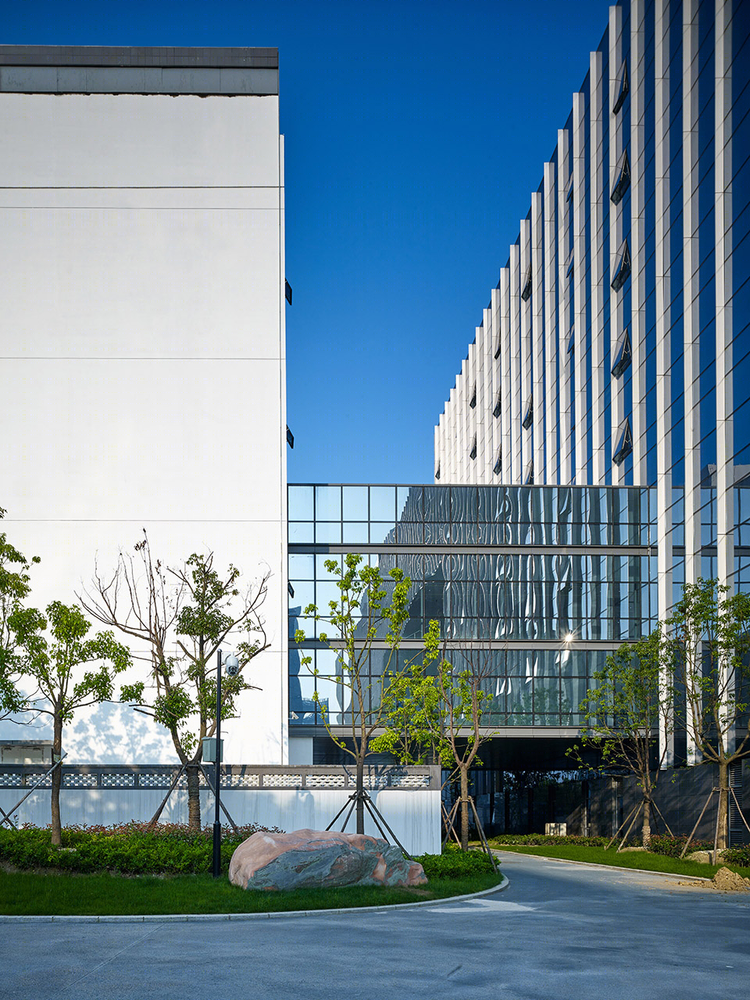
建筑的外立面材料选用温润柔和的陶土板搭配简洁大方玻璃幕墙的方式,形成天然与人工、传统与现代、感性与理性的对比,二者刚柔并济;朝向内庭的一侧使用反射度低的玻璃幕墙材料,利用镜面反射原理形成庭院尺度无限深远扩大的视觉效果,将自然要素和人的活动进一步放大和夸张,强化了庭院的重要性和场所感。
The combination of mild & gentle ceramic plates and simple & elegant glass curtain walls are selected as the façade materials for the buildings, so that a contrast is visible between the natural and the artificial, the traditional and the modern, and the sense and sensibility, coupling hardness with softness; glass curtain wall materials with low reflectivity are applied for the side facing the internal courtyard, in order to generate the visual effect of infinitely expanding the size of the yard by employing the specular reflection principle, further amplifying and exaggerating the natural elements and human activities, reinforcing the importance and sense of place of the courtyard.
▼陶板与玻璃幕墙,ceramic plates and glass curtain walls


▼外立面连续界面,continuous interface

本项目试图从生态学创作角度,以自然作为生发所有要素的源头,以庭院作为协调人、技术和建筑之间关系的中心,以期为从事高强度的数据管理分析的研发和管理人员提供高质量的交流、聚会、相互激励的场所、激发灵感的场所。
From the creative perspective of ecology, this project attempts to treat the courtyard as the source to coordinate the relationship between building and nature in order to provide a workplace for the R&D and management personnel engaged in data management and analysis, a sector involving intensive effort and high accountability, to enjoy high-quality communications, to have mutual stimulation and to activate the inspiration for R&D.
▼顶层集会空间,the meeting hall

▼研发中心门厅,the hall of R&D building
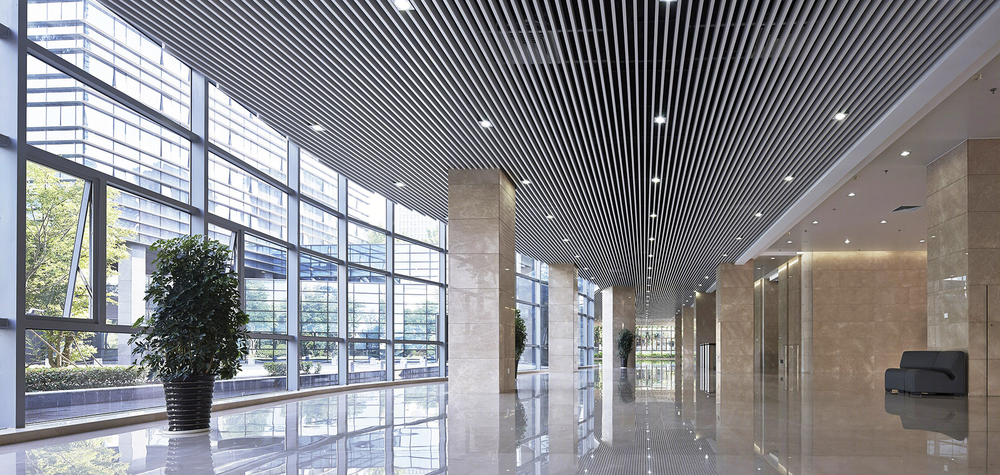
▼员工餐厅,the dining room
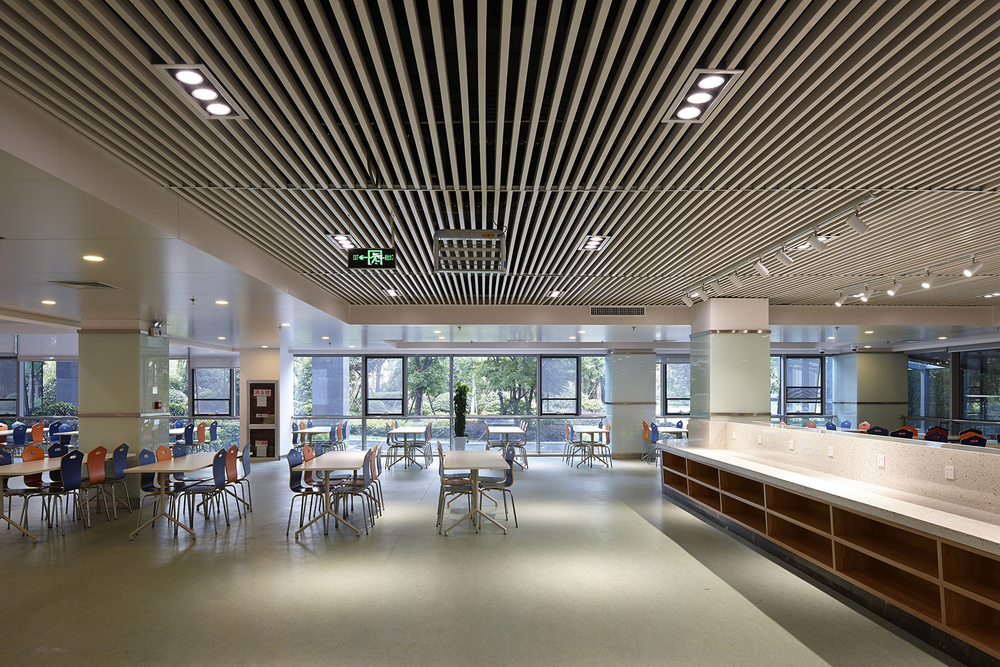
▼总平面图,site plan

▼一层平面图,the first floor
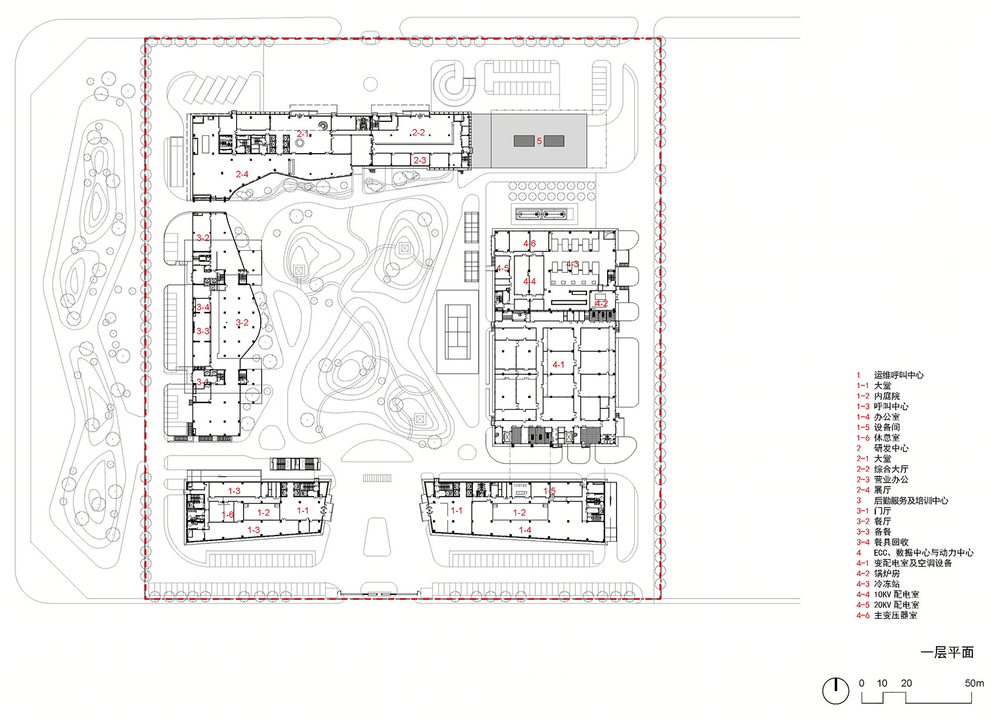
▼二层平面图,the second floor plan
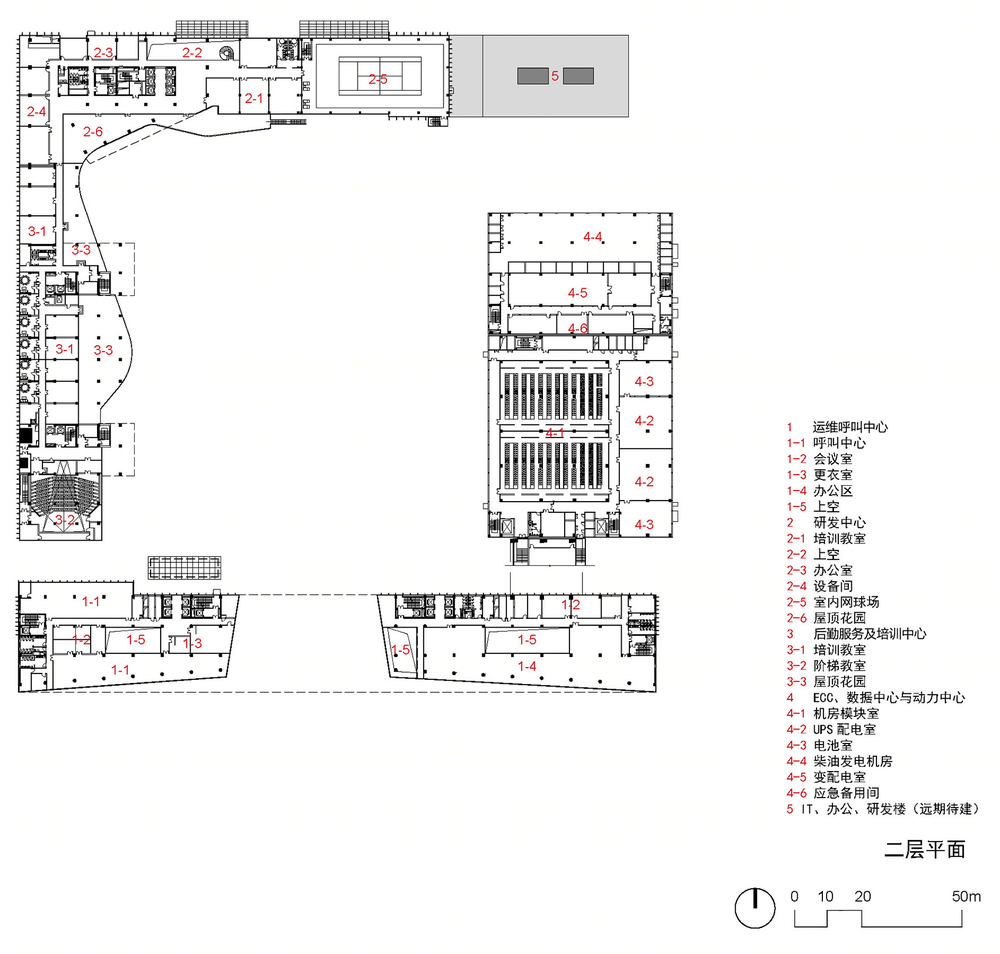
▼标准层平面图,standard floor plan

▼立面图,elevation

▼剖面图,section
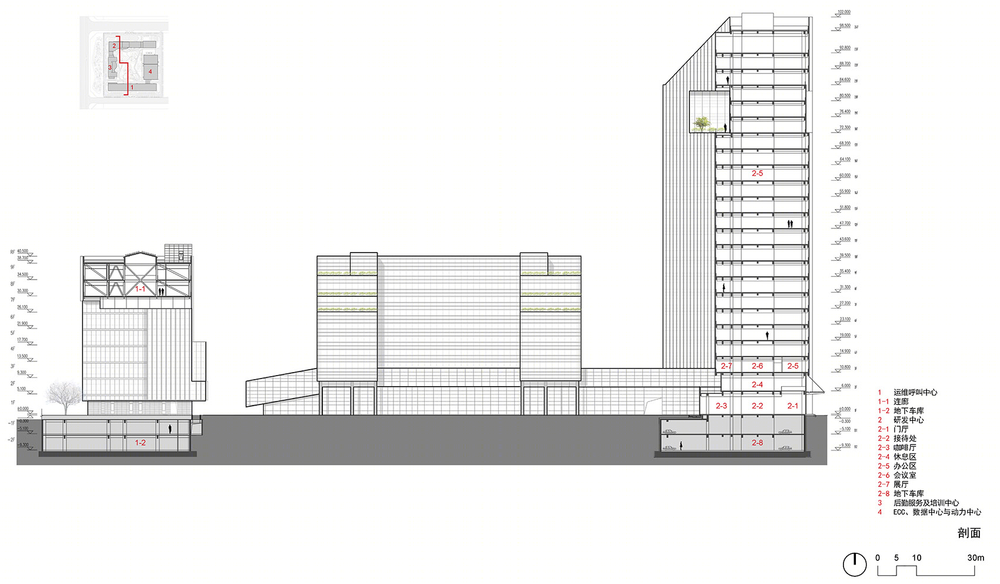
▼详图,detail

项目名称:中国信达(合肥)灾备及后援中心
设计团队:王振军,蒋小华,袁源,李达,冯伟,陈珑,尹钰,孙成伟
项目地点:中国 合肥
项目时间:2012设计,2015.12建成
项目面积:13.98万平方米
图片版权:王振军工作室
所属单位:中国电子工程设计院
Project name: Cinda (Hefei) Disaster Recovery and Back-up Base in China
Architecture design: Wang Zhenjun, Jiang Xiaohua, Yuan Yuan, Li Da, Feng Wei, Chen Long, Yin Yu, Sun Chengwei
Location: Heifei, China
Project Period: Design 2012 ; Construction 2013-2106;
Size: 27,394sqm
Images: WZJ Studio
Institute: China Electronics Engineering Design Institute
Constuction Design Partner:S. Y. Technology , Engineering & Construction Co. LTD
Chinese & English text: CEEDI



